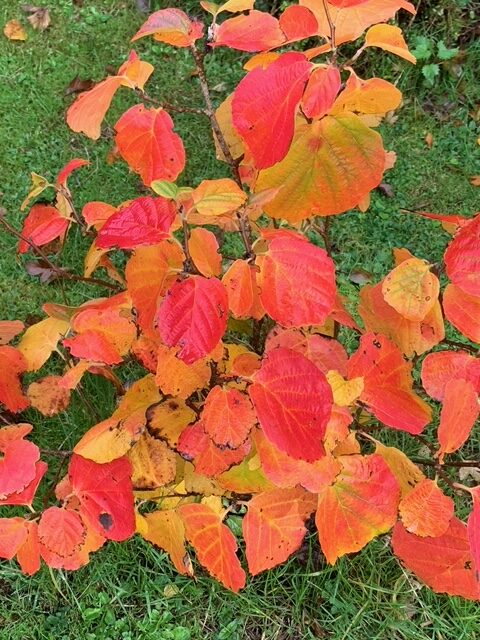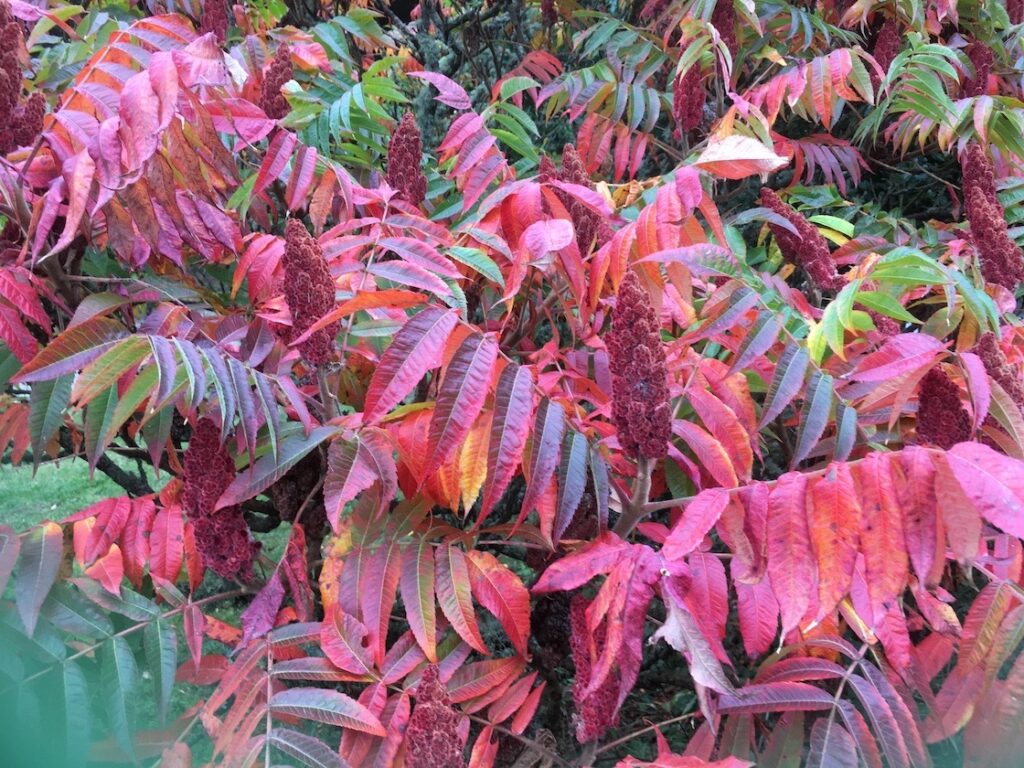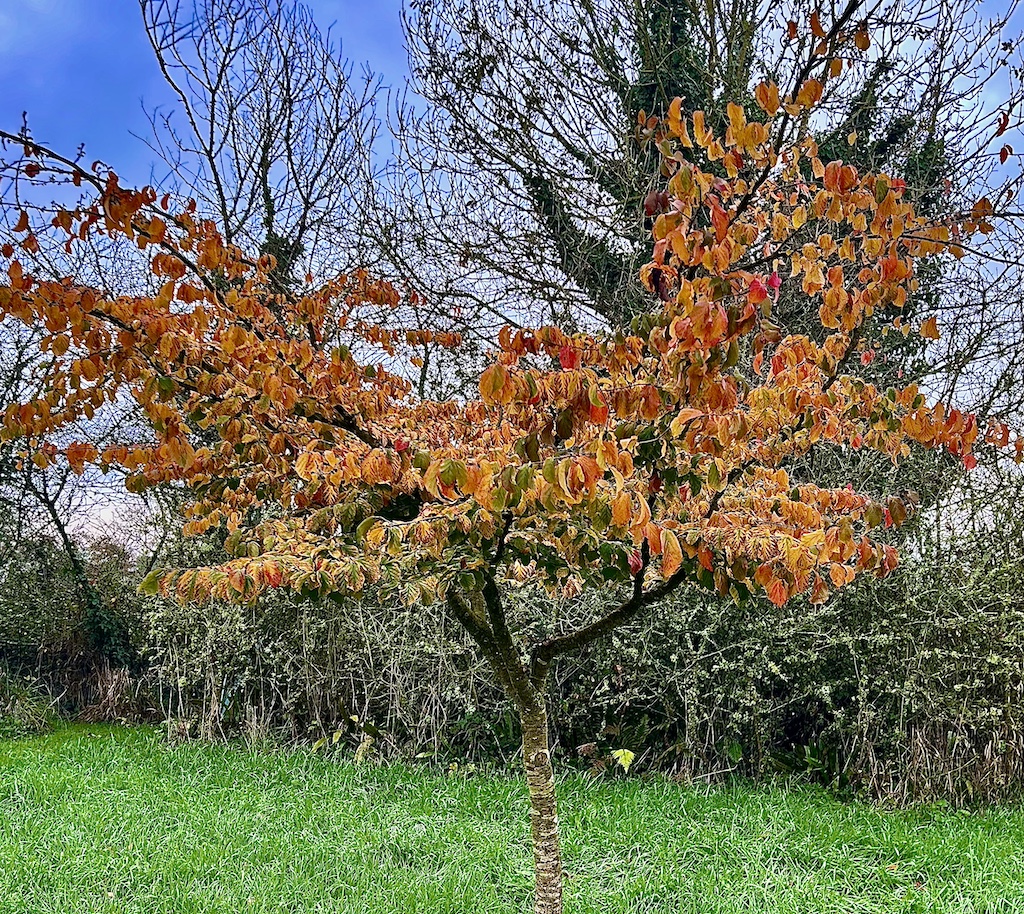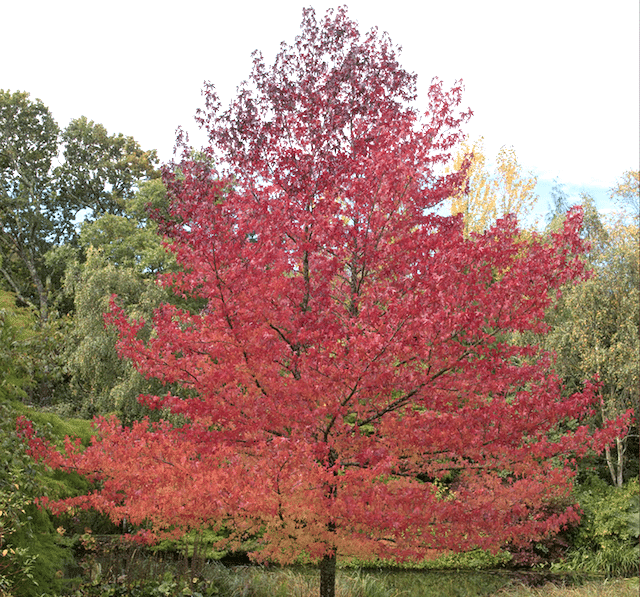
Trees and shrubs that round off their summer performance with a blaze of glowing crimson give you twice as many bangs for your hard-earned bucks. But which are the best to choose? In our view, there are some go-to trees and shrubs if you’re after an autumnal blaze…
Best trees for autumn colour in a small garden
Also known as Mountain Witch Alder, this slow-growing tree has been awarded the RHS 'Award for Garden Merit', so you know it's an all-round fabulous little performer.
It's deciduous and bursts into life in spring by producing fragrant white bottlebrush flowers by early summer. The broadly rounded leaves of Fothergilla major turn to knock-out shades of fiery red and orange and Laura confirms that you can depend on this, particularly if it's planted in a sunny spot.
Conditions
Fothergilla major is happiest in a rich and leafy ericaceous soil in acid borders. It would be delighted to grow at the edge of some trees in humus-rich soil. Although tolerant of light shade, the Mountain Witch Alder is at its best when grown in a sunny position - its colours will be most vibrant.
Prune straight after flowering to avoid cutting off next year's buds.
Size
Height: 2.5m (8'). Spread: 2m (6').
- Will stay reliably small in size
- Not hugely happy in an alkaline soil, the leaves tend to yellow a bit.
- Keep rabbits and deer at bay - they like it too!
- It's a genuinely sweet little tree - even the leaves are a friendly shape!
Very popular and oh so pretty, acer palmatum has small, deeply 5 to 7-lobed leaves most of which have wonderful autumn colour.
Small red flowers in spring are followed by winged, red or green fruits.
Acer palmatum is one of the most popular of the Japanese Maples across the country. Its slow-growing habit makes it perfect for container and patio pot growing.
A genuinely striking small tree that likes a dappled shade corner with plenty of shelter or protection from the elements, it adds a dainty dynamism to your garden.
Foliage turns from mid-green in summer to warm orange, yellow and red in autumn.
Conditions
It prefers neutral to acid soil and will thrive in full sun or partial shade, however it will struggle in a very windy spot. It's pretty hardy everywhere in the UK - RHS rating H6.
Height
Up to 4-8 metres in height and width but it takes its time, reaching its full height in 20 years
- So dainty and perfect - it's like a real life sized bonsai!
- Like us, it doesn't enjoy being buffeted by strong winds
- It always looks tidy and under control but knocks you out with its fabulous colour.
Best trees to buy for autumn colour in a medium-sized garden
This must be one of the best-known trees for autumn colour – its large, jagged leaves at the end of the summer put a rainbow to shame.
It has red, hairy stems and, unpruned, can grow quite high but although it starts off with great gusto in the early years, it does slow up.
You can give it a light prune in June to shape it or a heavier pruning in late winter/early spring. Always wear gloves though as its sap can be quite irritating.
It's dioecious, ie there are boy and girl rhus', but this doesn't affect the autumn colour so don't worry about gender preferences. Just don't call them Jack or Jill unless yours develops dense crimson fruits, in which case you can christen it 'Jill'.
Conditions
It's happy in most soils and doesn't mind whether it's sheltered or exposed, plus it should be hardy in most parts of the UK (RHS 6).
Height
4-8 metres in height and width, but it will take a while to get there.
- Its unfussy and its autumn colour is reliably outstanding
- It suckers, so keep on top of these if you don't want a plantation of them.
- Its sap can be an irritant to skin.
Parrotia persica or Persian Ironwood, is a very hardy beauty and its October/November finery is a fabulous spectacle. It’s not a quick grower – could take more than 30 years to reach a max height of 8m. It is wide-spreading though, which is rather wonderful because it can display that awesome leaf-colour to perfection.
‘Bella’ is an exceptional cultivar that boasts not only fiery autumn colour but also tinted foliage in the spring. The large, deeply veined oval leaves are dark red/purple tinted when young, maturing to glossy green then turning rich shades of orange and wine red in the autumn.
In late winter, before the foliage emerges, it also bears clusters of unusual, spidery, crimson flowers because it's related to the Witch Hazel family.
Mature trees develop attractive, flaking bark which provides an additional winter feature. It makes a stunning specimen tree.
Conditions
Plant Parrotia persica in any moist, fertile, well-drained soil; it will grow happily in improved clay soils. Incorporate plenty of compost or well-rotted manure prior to planting. Choose a final position in full sun or partial shade. It's hardy in the UK (RHS Rating H6)
Height
4-8 metres, wider than 8 metres
- Those spidery blooms in late winter are a real boost!
- It's exceptional in autumn, but plenty going on in all the other seasons too





